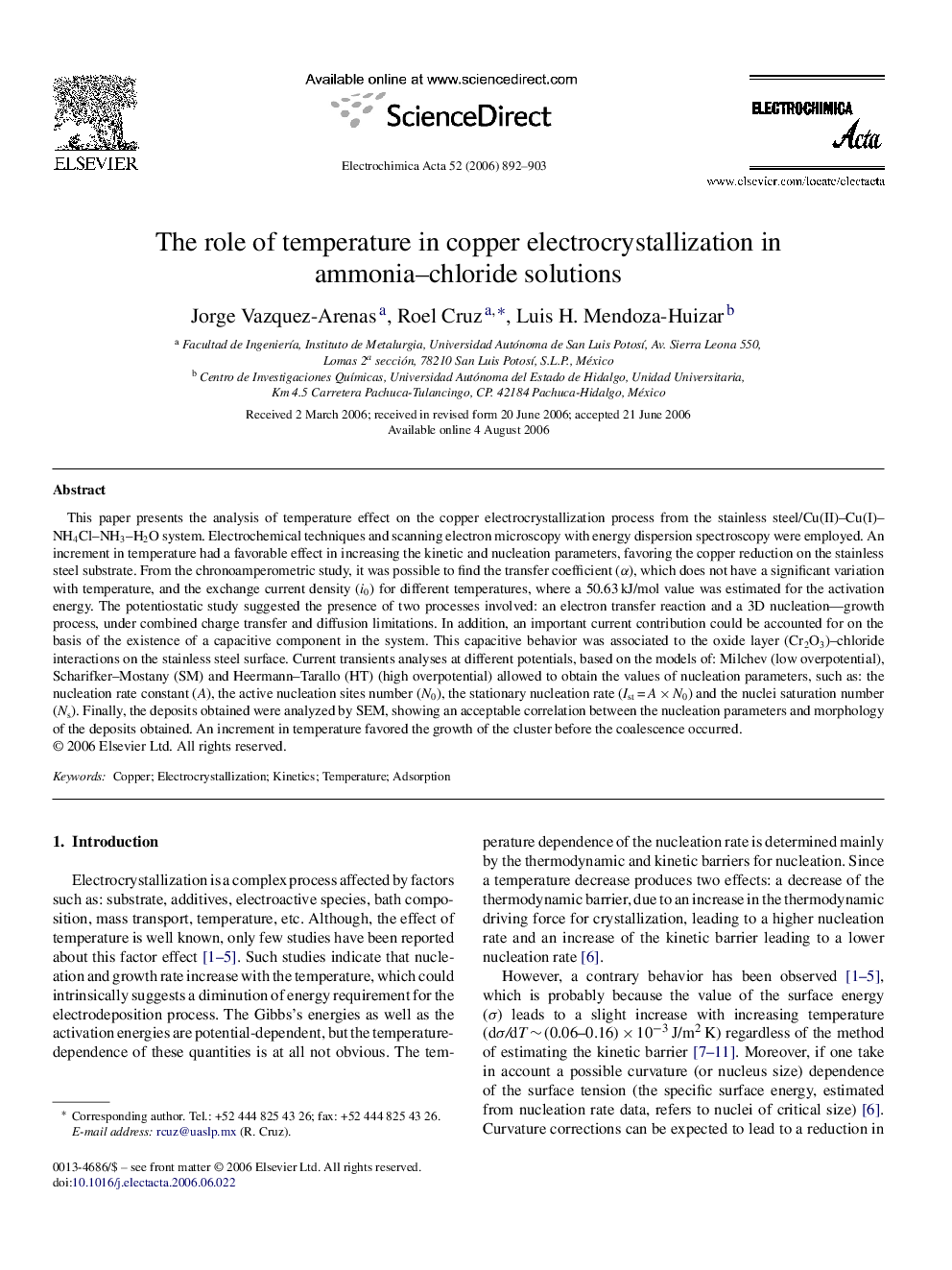| کد مقاله | کد نشریه | سال انتشار | مقاله انگلیسی | نسخه تمام متن |
|---|---|---|---|---|
| 196108 | 459832 | 2006 | 12 صفحه PDF | دانلود رایگان |

This paper presents the analysis of temperature effect on the copper electrocrystallization process from the stainless steel/Cu(II)–Cu(I)–NH4Cl–NH3–H2O system. Electrochemical techniques and scanning electron microscopy with energy dispersion spectroscopy were employed. An increment in temperature had a favorable effect in increasing the kinetic and nucleation parameters, favoring the copper reduction on the stainless steel substrate. From the chronoamperometric study, it was possible to find the transfer coefficient (α), which does not have a significant variation with temperature, and the exchange current density (i0) for different temperatures, where a 50.63 kJ/mol value was estimated for the activation energy. The potentiostatic study suggested the presence of two processes involved: an electron transfer reaction and a 3D nucleation—growth process, under combined charge transfer and diffusion limitations. In addition, an important current contribution could be accounted for on the basis of the existence of a capacitive component in the system. This capacitive behavior was associated to the oxide layer (Cr2O3)–chloride interactions on the stainless steel surface. Current transients analyses at different potentials, based on the models of: Milchev (low overpotential), Scharifker–Mostany (SM) and Heermann–Tarallo (HT) (high overpotential) allowed to obtain the values of nucleation parameters, such as: the nucleation rate constant (A), the active nucleation sites number (N0), the stationary nucleation rate (Ist = A × N0) and the nuclei saturation number (Ns). Finally, the deposits obtained were analyzed by SEM, showing an acceptable correlation between the nucleation parameters and morphology of the deposits obtained. An increment in temperature favored the growth of the cluster before the coalescence occurred.
Journal: Electrochimica Acta - Volume 52, Issue 3, 12 November 2006, Pages 892–903